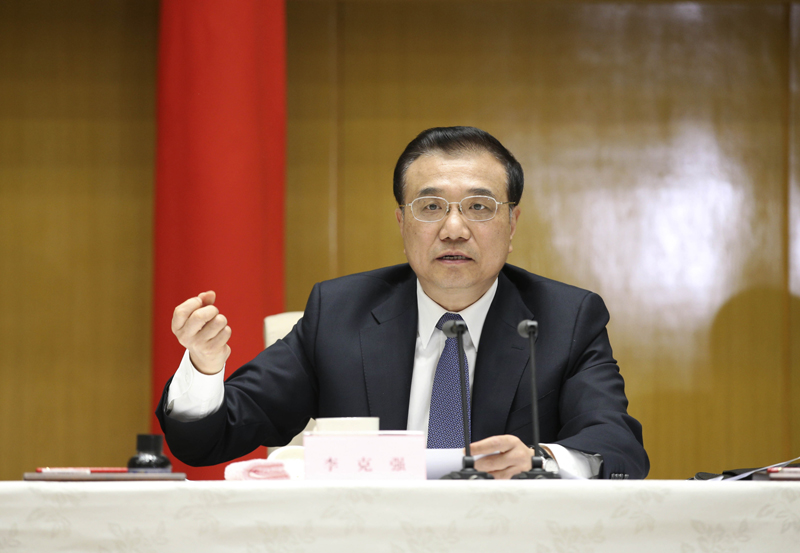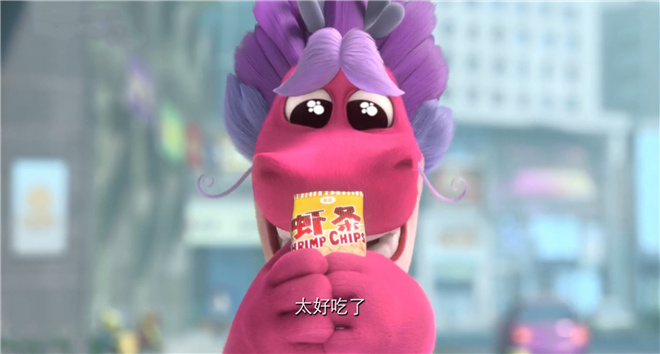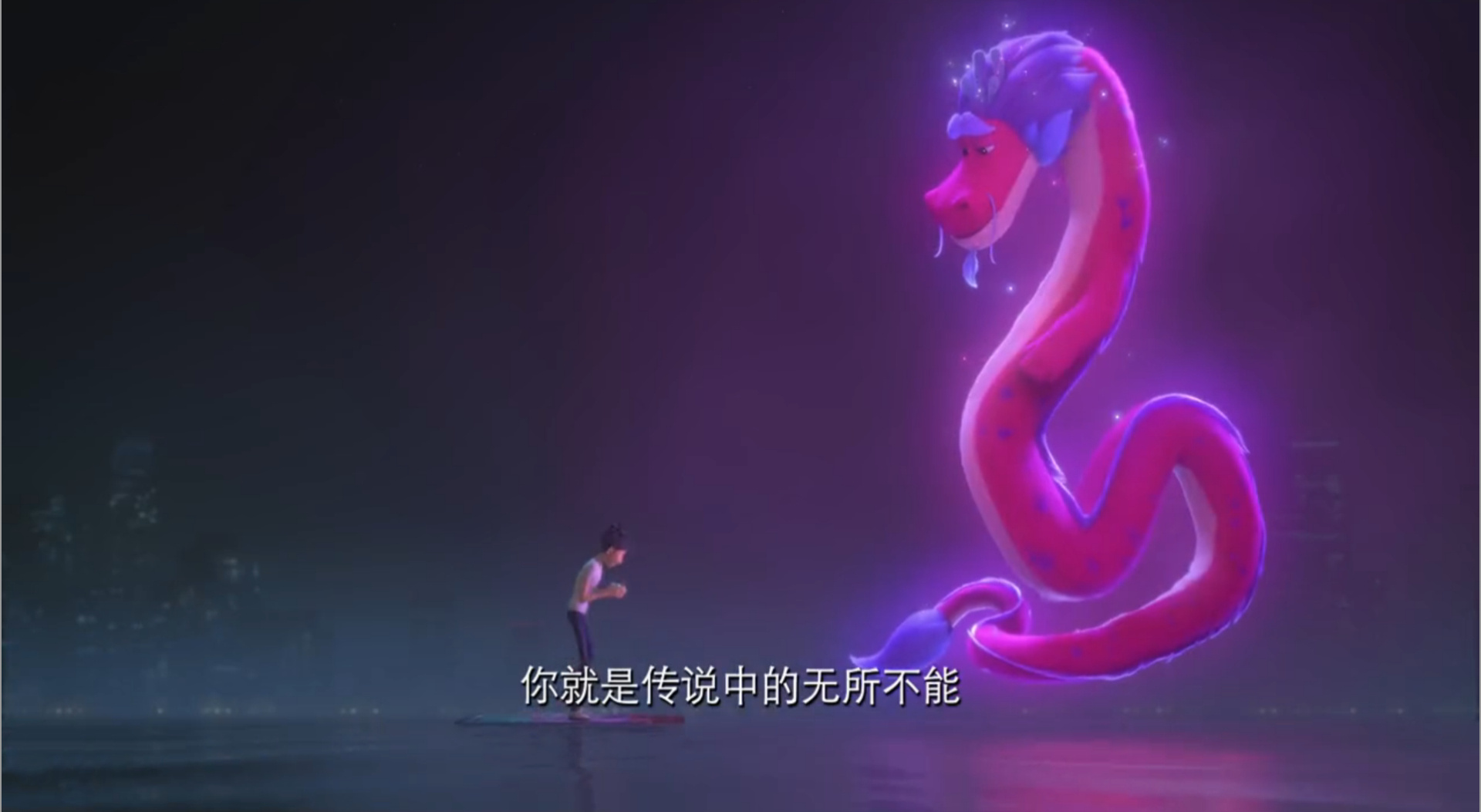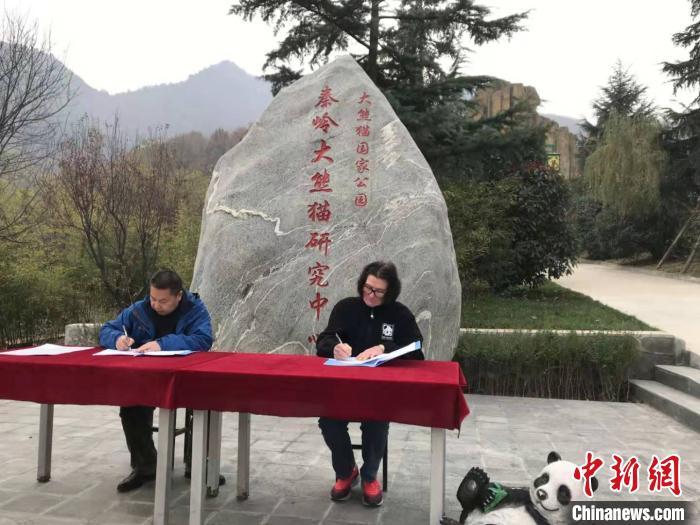Xinhua News Agency, Beijing, April 14th
Speech at the Fourth Clean Government Work Conference in the State Council
(March 28, 2016)
Li Keqiang

Premier Li Keqiang said at the Fourth Clean Government Work Conference in the State Council on March 28th that "two random and one open" supervision should be fully implemented this year, and the inspection objects and law enforcement inspectors should be randomly selected, and the inspection situation and investigation results should be disclosed to the public in time to prevent arbitrary inspection and human interference, reduce the rent-seeking space of the supervision department and make the supervision objects dare not take chances.
The main task of this meeting is to conscientiously study and implement the spirit of the important speech delivered by the Supreme Leader General Secretary at the Sixth Plenary Session of the 18th Central Commission for Discipline Inspection, implement the deployment of the Sixth Plenary Session of the Central Commission for Discipline Inspection, sum up the building of a clean and honest government in the government system in 2015 and the anti-corruption work, and clarify the key tasks in 2016. Below, I would like to make a few comments.
First, fully affirm the achievements and unremittingly grasp the anti-corruption work of the government system.
In the past year, local governments at all levels and various departments in the State Council conscientiously implemented the decision-making arrangements of the CPC Central Committee on building a clean and honest party style and anti-corruption work, carried out in-depth special education on "three strictness and three realities", strictly enforced political discipline, reformed political style and eliminated corruption, and achieved remarkable results, which provided a strong guarantee for achieving steady progress and good stability in economic and social development.
First, the continuous reduction of authority has effectively promoted anti-corruption at the source. Insist on "slimming down" power, "strengthening" integrity and strengthening development. Last year, 311 items of administrative examination and approval were cancelled, the examination and approval of non-administrative licenses was completely ended, 70% of the intermediary services of administrative examination and approval of the State Council departments were cancelled, and various professional qualifications were reduced by 44%, the items priced by the central government were reduced by 80%, and the approved investment projects were reduced by 76%. The reform of the commercial system was accelerated, the pre-approval of industrial and commercial registration was streamlined by 85%, and the "three certificates in one" and "one photo and one yard" were fully implemented, which greatly enhanced the market vitality. On average, 40,000 new market entities and 12,000 new registered enterprises were registered every day. At the same time of decentralization, we should strengthen and innovate post-event supervision and promote the optimization of government services.
Second, adhere to strict management of power and money, which has effectively promoted the safety and performance improvement of public funds. We will increase the publicity of the financial budget. The budgets of the central departments, the "three public funds" and the final accounts of the departments are all made public. The contents of government procurement, operating expenses of the organs, official reception batches and the number of people are disclosed to the public for the first time in the final accounts. Financial departments at all levels have recovered and used more than 380 billion yuan in stock funds as a whole. Strengthening audit supervision, auditing more than 130,000 units nationwide, increasing revenue and saving expenses for the country and recovering losses of more than 850 billion yuan.
The third is to pay close attention to supervision and accountability, which has effectively promoted the diligent and promising cadres. The State Council organized the second major inspection and follow-up audit, and handled 1,456 people in three batches for problems such as fund precipitation, idle land, idle affordable housing, and delays in key projects. The report praised the typical experience and practices of relevant regions and departments, and praised and encouraged the provinces that have done well in promoting key work and the cities and counties that have achieved remarkable results in implementing key policies. Strengthen the supervision of performance of duties, and investigate and investigate the dereliction of duty in key areas such as safety production, food safety and environmental protection.
Fourth, strengthening discipline and discipline has effectively promoted the transformation of government style and the building of a clean government. Resolutely implement the spirit of the eight provisions of the CPC Central Committee, continuously correct the "four winds" and strictly implement the State Council’s "Three Chapters of the Constitution". Strictly control the construction of new government buildings and halls, and clean up the office space that exceeds the standard of the central state organs. The budget for the "three public" funds at the central level decreased by nearly 12% year-on-year. Last year, the national discipline inspection and supervision organs filed a total of 330,000 cases, closed 317,000 cases, and gave disciplinary sanctions to 336,000 people, and 14,000 people suspected of committing crimes were transferred to judicial organs for handling. Intensify international efforts to pursue and recover the 1023 people who fled, which has formed a powerful shock to corrupt elements.
While fully affirming the achievements, we should also clearly see the existing problems and shortcomings. During the work of the Central Inspection Team and the the State Council Inspection Team, it was found that the anti-corruption system in some localities, departments, enterprises, institutions and financial institutions was not perfect, a few cadres did not act, would not act, and acted indiscriminately, and many aspects of the reform of decentralization were still not in place. Corruption in key areas and around the masses can not be ignored. The situation of combating corruption and promoting honesty is still severe and complicated, and we must pay close attention to it consistently.
This year, China’s development faces more and more difficulties and challenges. All regions and departments should further enhance their sense of hardship, make full preparations for tough battles, persist in focusing on reform and development, and ensure that the economy operates in a reasonable range; Focus on combating corruption and promoting honesty, and effectively push forward the building of a clean and honest government and anti-corruption work in the government system. In accordance with the "five in one" overall layout and the "four comprehensive" strategic layout, we should strictly manage the party in an all-round way, strictly respect party constitution, strictly observe political discipline, strictly administer according to law, innovate institutional mechanisms, resolutely punish corruption in key areas, resolutely eliminate the behavior of being lazy in politics, accelerate the construction of a government ruled by law, an innovative government, a clean government and a service-oriented government, and promote stable economic development and social harmony and stability with new achievements in combating corruption and promoting honesty and diligence for the people.
Two, accelerate the transformation of government functions, improve efficiency, and effectively manage the right to use the right.
Facing the new situation and new tasks, to fully and correctly perform government duties, we should not only reduce the authority, but also make good use of the power, realize effective government governance, enhance the government’s execution and credibility, and build a clean, efficient and people-satisfied government.
First, we should deepen the "streamline administration, delegate power, strengthen regulation and improve services" reform. Practice has proved that decentralization, combination of decentralization and management, and optimization of service reform are not only the key measures to stimulate market vitality and social creativity, but also the fundamental policy to fight corruption and promote honesty. Although this reform has made great progress, it still faces many new situations and problems, and it must be pushed forward in depth unremittingly. This year, we should focus on stabilizing growth, restructuring and benefiting people’s livelihood, improve the "gold content" of decentralization, enhance the effectiveness of supervision, and highlight service initiative.
Continue to vigorously reduce administrative examination and approval items. Many enterprises and the masses report that some government departments still have too many examination and approval items. Last year, the inspection of the State Council found that some investment and construction projects had to go through more than 40 examination and approval links and more than 100 official seals; Some industrial construction projects take more than two years to run for approval. I went to the local investigation, and the problems in this area are still relatively strong. A few years ago, a local CPPCC member showed an approved "Long March Map". Now the approval procedure is simplified, and it may become a "Long March of a Thousand Miles" or a "Long March of a Hundred Miles", but it is still a "Long March". Therefore, we have to press, and what can be put to the market should be put to the market as much as possible. Another important reason for enterprises to report the difficulty in examination and approval is that the examination and approval standards are not uniform, and some of them are preconditions for each other, falling into the strange circle of "chicken lays eggs and eggs lay chickens". For example, to apply for the establishment of a combination of medical care and nursing, the necessary approval is required, and the enterprise does not object. However, the current situation is that the relevant departments "kick the ball" with each other, saying that the procedures of another department have not been approved, and I can’t give you approval, which makes the enterprise at a loss. In the future, not only the examination and approval links will be reduced, but also the standards will be unified, and the problem of buck passing between departments must be completely solved. This year, we will cut off a number of administrative licensing items of the State Council departments and a number of administrative examination and approval items implemented in places designated by the central government. Further reduce the enterprise investment projects approved by the central government, cancel and decentralize the investment approval authority, delegate the power to the market and enterprises to the maximum extent, and consolidate the momentum of effective investment stabilization and recovery. For the reserved investment approval items, it is necessary to clarify the standards, shorten the process and complete them within a time limit.In principle, it is necessary to go to the online approval and supervision platform for investment projects. Except for safety and environmental protection matters, the mandatory assessment and review of investment projects will be cancelled. It is necessary to continue to lower the market access threshold, cancel more than one-third of the pre-approval of enterprise registration, streamline the post-licensing projects for industrial and commercial registration, and solidly promote the pilot reform of "separation of licenses". In the future, apart from major public interests such as national security, ecological security and public health, all the "certificates" that can be separated should be separated. It is necessary to constantly explore and accumulate experience in the reform pilot, gradually push it forward, and effectively solve the problem of "it is easier to do a license than to do a permit". At the same time, we should pay attention to promoting decentralization in coordination. Cross-departmental, cross-disciplinary and cross-regional examination and approval items should be considered as a whole. The same or similar categories should be cancelled or decentralized at the same time, and the related examination and approval items should be cancelled or decentralized in the whole chain. The higher level government should consider the actual situation of the grassroots, adhere to the matching of power and responsibility, and the adaptation of power and ability to ensure that the grassroots can live and manage well, and must not let it go. The reform of "three certificates in one" and "one photo and one yard" has been fully implemented, and relevant departments and units should adjust relevant regulations in time to link up with them, so as to truly realize that once they have obtained a certificate, they will act and operate according to the certificate, and "one certificate will go to the world".
Strengthen regulatory innovation and optimize services. This year, it is necessary to comprehensively push forward the "double random and open" supervision, and the inspection objects and law enforcement inspectors will be randomly selected, and the inspection situation and investigation results will be disclosed to the public in a timely manner. Carrying out this practice is an important regulatory innovation. Taking a random approach can not only reduce management costs, but also have a stronger deterrent. Because the object to be inspected is randomly determined by lottery, no one knows when it will be inspected on his own head, so he should always be wary. Supervision and law enforcement personnel are also randomly selected, which can reduce a lot of external intervention. Otherwise, once you know that you are going to supervise, people who run around and talk about human feelings will come. If some cadres can’t adhere to principles and stick to the bottom line, they will be corroded. Now, many departments have promoted "double randomness and one openness", and the effect is very good, indicating that it is completely feasible and the administrative cost is greatly reduced. This can also prevent human interference in the process of willful inspection and law enforcement, reduce the rent-seeking opportunities of the regulatory authorities, and also make the regulated objects always feel the invisible pressure of supervision and dare not take any chances. It is necessary to use information technologies such as big data, cloud computing, and Internet of Things to strengthen online and offline integrated supervision. It is necessary to integrate all kinds of administrative law enforcement teams and promote comprehensive law enforcement across departments and industries. It is clear here that local governments, especially cities and counties, should integrate and adjust the law enforcement team from their own reality, which is conducive to strengthening grassroots supervision, and relevant departments should not interfere. At present, some places are exploring the pilot of "three regulations in one" and unifying the power of many departments to review planning, which is actually conducive to strengthening supervision.In the past, many departments were sitting in the office for examination and approval, although they were also examined and approved according to regulations, but they left it alone after examination and approval, and they didn’t have the energy to manage it. The units that were examined and approved often built it as they wanted, and changed the drawings as they wanted. After the "integration of the three regulations", we can find out many problems by freeing up the original power of examination and approval to strengthen supervision and inspection, and we can also find out in time some units that do not follow the approved plan. This also shows that there were loopholes in supervision in the past, because the main energy was put on examination and approval, and now there are fewer examinations and approvals, which not only makes supervision more powerful, but also improves efficiency. At the same time, we should optimize public services. Simplify service processes, vigorously streamline procedures and links, and resolutely cut off unnecessary certificates and red tape. Innovate the service mode, fully implement "one-window acceptance, one-stop handling and one-stop service", vigorously promote online services, promote information interconnection, and make people and enterprises handle affairs conveniently and quickly. It is necessary to effectively solve the problem of "information island", such as law enforcement inspection and other information, which should be made public and shared. Otherwise, it is not only inconvenient for the masses and enterprises to do things, but also easy to shelter evil people from evil practices and breed corruption.
Second, we must comprehensively promote the openness of government affairs. Let the people supervise power and let power run in the sun, provided that government affairs are open and transparent. On February 4th, the Central Office and the State Council issued the Opinions on Comprehensively Promoting the Openness of Government Affairs. All localities and departments should fully implement the regulations of the CPC Central Committee and the State Council on decision-making and government information disclosure, adhere to the principle of openness as the norm and non-openness as the exception, and promote the openness of administrative decision-making, implementation, management, services and results, so that the people can better understand, support and supervise the government. This year, we should focus on doing a good job in making a sun list. In some places, it is a good idea to formulate a list of fees charged by enterprises, and no fees are allowed outside the list. In the past two years, we have made great efforts to reduce taxes and burdens, but some enterprises have not yet reported obvious benefits, because there are too many fees and charges, and many enterprises involved have no strict standards. At present, enterprises are facing difficulties in production and operation, and they must make up their minds to reduce the burden on enterprises and release water to raise fish. The "Government Work Report" clearly stated that this year, it is necessary to fully publish the list of local government powers and responsibilities, and try out the negative list system for market access in some areas. For administrative fees, government-set or guided service fees, government funds, national vocational qualifications, etc., catalogue management should be implemented. There is no power outside the list, and it must be in the list. All localities and departments should pay close attention to the formulation and publication of various lists. Before the end of this year, the State Council should conduct inspections in an appropriate manner. The formulation of the list should meet the requirements of transforming government functions, especially simplifying administration and decentralization, combining decentralization with management, and optimizing services.We can’t do too much and too long, and we can’t list all the things we shouldn’t be in charge of. With the "clear rules" of the list, it puts a "tight spell" on power, which can not only effectively control the willfulness of power, but also effectively break the "hidden rules" of rent-seeking corruption.
Third, we must strengthen the construction of government integrity. Governing the country, no faith, no standing. Government integrity is directly related to the smoothness of government decrees, the gain and loss of people’s hearts, and also has a strong social demonstration effect. We are the people’s government, and we are responsible to the people. We must be honest, keep our word, and do what we say, and don’t let loose cannon. When I do local research, I often hear from some private entrepreneurs and foreign businessmen that some local governments do not act according to the contract, which makes them feel at a loss and affects their investment enthusiasm. Governments at all levels must take honest administration as an important criterion, strictly administer according to law, strictly fulfill their promises, improve the restraint and accountability mechanism of government integrity, win the trust of the people with the attitude of moving trees to establish trust, and promote the establishment of integrity awareness and the improvement of integrity level in the whole society. It is necessary to promote the construction of social credit system, vigorously carry forward the culture of honesty, build a mechanism for encouraging trustworthiness and punishing dishonesty, and intensify the crackdown on dishonest behaviors such as infringement of intellectual property rights, counterfeiting and selling fake goods, commercial fraud, debt evasion and loan fraud. The recent case of "defective vaccine" is being investigated and handled by an investigation team and an inspection team formed by the State Council. Relevant localities should earnestly take responsibility, severely investigate and deal with dereliction of duty, resolutely crack down on criminals, and give the people a responsible account. This incident also reflects that it is very important for us to emphasize the combination of decentralization and decentralization. Effective "management" is precisely to better "release", so as to create a market environment conducive to entrepreneurial innovation, honesty and law-abiding, and fair competition, while reducing the soil that breeds corruption and rent-seeking opportunities.
Third, improve the incentive and restraint mechanism to ensure the implementation of major decision-making arrangements
In the past two years, through paying close attention to supervision and accountability, the implementation of major policies, major projects and major projects has improved significantly, but there are still many problems and gaps in some localities and departments. For example, last year, the General Inspector of the State Council found that some provincial river regulation projects were arranged by the central subsidy funds in 2013, which should have been completed by the end of last year, but the projects had not yet started in May last year. In other places, affordable housing has been built. Because the supporting facilities such as power supply, sewage discharge and municipal roads have not kept up, the people have been unable to move in, and the masses have great opinions. This shows that the phenomenon of laziness in politics cannot be underestimated, and it must continue to be resolutely rectified, which is directly related to the realization of the expected goals of economic and social development this year. Judging from the situation since this year, the economic operation has been generally stable and there have been new positive changes. This shows that the effects of a series of measures taken since last year to stabilize growth, promote reform and adjust the structure are gradually emerging. However, the downward pressure on the economy is still very great, and the CPC Central Committee and the State Council will continue to take new and important measures according to the development of the situation. With policy measures, the key is that cadres in all regions, departments and levels should be diligent, resourceful and courageous, and work hard to ensure that policy measures are implemented. Grasping the implementation depends on the system, and it is necessary to establish and improve an effective mechanism with clear rewards and punishments and promoting diligent and clean government.
First, we must strictly implement the work responsibility system. The main objectives and tasks of economic and social development this year, major policies and reform measures, major investment projects and people’s livelihood projects have been reviewed and approved by the National People’s Congress, which has legal effect and is also a solemn commitment made by the government to the people and must be completed to the letter. On March 18th, the State Council has defined the division of labor for the key work of the Government Work Report. All leading departments should take the initiative to take responsibility, be responsible for the whole process, and grasp it to the end. For binding indicators and hard tasks, it is necessary to decompose, refine requirements, implement responsibilities, sign responsibility letters for objectives and tasks step by step, and set up a "military order." For major investment projects, the construction period should be reversed, and on the premise of complying with the procedures and ensuring the quality and safety of the project, we should try our best to move forward and ensure the progress. The main responsible comrades of all regions and departments should personally grasp the deployment and implementation, rationally allocate their forces, and ensure that everyone is in charge and everything is caught. At present, the growth rate of fiscal revenue in some places is declining, and the rigid expenditure on people’s livelihood must be guaranteed. If the economic work fails to catch up, the fiscal revenue will continue to decline, and the rigid expenditure will not be fulfilled, and finally it will be impossible to explain to the people. Local governments at all levels and various departments in the State Council should feel a heavy responsibility and be responsible to the people. Cadres at all levels should, with the sense of responsibility of "doing nothing in the day, sleeping hard at night" and the sense of urgency that time waits for no one, be really nervous, take action and do all the work well.
Second, we must improve the normalized supervision and accountability mechanism. Supervision and accountability is a "sharp weapon" for implementation. It cannot be a gust of wind, and it must be unremitting and persistent. The State Council will continue to carry out major inspections in the middle of this year, organize key spot checks at the end of this year, and conduct random special inspections on key tasks. All regions and departments should also strengthen supervision. For the problems found, it is necessary to pull out a list, establish a ledger, and rectify within a time limit. It is necessary to strengthen accountability. If the implementation of the central decision-making is ineffective, the implementation of major policies is not in place, and the promotion of major projects and projects is seriously lagging behind, which affects the completion of the main objectives and tasks of economic and social development, the interview, the handling and the notification will be notified, and the main responsible persons and related responsible persons will be held accountable, so that cadres have both a sense of responsibility and a sense of awe. It is necessary to link the inspection results with the mechanism of cadres’ promotion and demotion, so that the capable can be promoted, the mediocre can be demoted and the inferior can be eliminated. There must be no idea that "more things are better than less things", which will occupy the position and delay the cause of the party and the people.
Third, we must improve the positive incentive mechanism. For places that really work hard, we should increase incentives and support, and encourage all localities to compete for development from reality. Cadres who are willing, daring and capable should be commended, provide a bigger stage, support and encourage reform and innovation, and drive more people to start businesses. It is necessary to establish a reasonable fault-tolerant and error-correcting mechanism. As long as the mistakes and shortcomings of cadres in their work exploration are out of public interest and not for personal gain, they should be tolerated according to the situation and given the opportunity to correct them, and their enthusiasm should not be dampened. Objectively speaking, at present, government workers, especially grass-roots civil servants, work very hard and their income is not high. We must resolutely block the "partial door" and solve the problem that civil servants participate in distribution with power and seek improper benefits; It is also necessary to open the "main entrance" to effectively guarantee the working conditions, reasonable income and dignity they need to perform their duties, and the established normal wage growth mechanism must be implemented on schedule. This year, despite the great pressure of financial revenue and expenditure, we should continue to raise the basic pension for retirees in enterprises, institutions and institutions according to the mechanism. We will implement the "vegetable basket" mayor’s responsibility system, temporary assistance, and assistance and support for poor people to ensure the basic livelihood of people in need. Financial departments at all levels should optimize the expenditure structure and ensure that it is put in place. This should also be supervised.
While establishing and improving the incentive and restraint mechanism, we should focus on the problems existing in cadres’ ideological understanding, do a good job in depth and carefully, and earnestly enhance cadres’ awareness of performing their duties and responsibilities. It is corruption to be dishonest in government, and it is also disguised corruption to be incompetent in government. The ancients said, "it is a sin to be an official and waste his affairs." No matter what the reason, as long as you don’t act as an official, you don’t meet the requirements of the CPC Central Committee, you don’t meet the requirements of performing your duties according to law, you don’t meet the requirements of fighting corruption and promoting honesty, and you seriously damage the government’s execution and credibility. It is not allowed. Since we choose to serve the people, we must put the interests of the country and the people in the highest position, worry about the world first, enjoy the world later, and dare to take responsibility and act bravely. This is the duty of communist party people and the morality of politics. It is necessary to strengthen cadres’ awareness of the rule of law and discipline, learn to work under constraints, get used to working under supervision, and turn pressure into motivation. It is necessary to strengthen the study and training of cadres so that they can actively adapt to the new normal and improve their working ability and level. We should care about and care for cadres and attach importance to solving practical problems. In a word, effective measures should be taken to mobilize the enthusiasm, initiative and creativity of all regions, departments and cadres to the maximum extent, gather wisdom and pool strength, and form a strong joint force for the common development.
Fourth, improve the system, strengthen supervision, and promote the in-depth development of key anti-corruption work.
Public funds, public resources, state-owned assets, finance and other fields involve major economic interests, and poor supervision can easily breed corruption. At the same time, some grassroots unhealthy practices and corruption problems are widespread. It is necessary to tighten the institutional cage, prevent and reduce the occurrence of corruption, resolutely punish corrupt elements, and strive to form a long-term mechanism that does not dare to rot, cannot rot, and does not want to rot.
First, effectively manage and use the government’s "money bag". At present, the problems of "scattered, small and chaotic" use of funds and idle deposits are still outstanding. There are still too many special funds, and the number of large special projects has been reduced to more than 90, but there are still more than 360 small projects. The problem of excessive stock funds has not been effectively solved. A lot of financial funds are sleeping on their accounts, which is a huge waste in itself. This year, the contradiction between fiscal revenue and expenditure is more prominent, so we must make careful calculations, focus on improving the performance of fund use, and focus on doing a good job in three aspects: "reducing special projects, reducing inventory, and controlling the three public offices." It is necessary to further reduce financial special projects. Implement the list management of special financial funds, establish a regular evaluation and withdrawal mechanism for special transfer payments, cancel special projects with expired policies, policy adjustments and low performance, integrate projects with similar goals, similar investment directions and similar management methods, open up channels for the use of funds, prevent funds from being "fragmented", and severely investigate and punish embezzlement and misappropriation of special funds for corruption. The State Council’s opinion on the first integration of financial poverty alleviation funds will be issued soon, and all regions and departments should conscientiously implement it. It is necessary to further reduce the capital inventory. Strictly clean up the financial balance carry-over funds, strengthen the monitoring of stock funds, and all the surplus funds and carry-over funds that have not been used up for two consecutive years will be recovered and rearranged, and adjusted and used to protect people’s livelihood, make up shortcomings and increase stamina. This is also clearly stipulated in the budget law and must be done. At the same time, pay close attention to the establishment of a long-term mechanism to prevent the formation of new funds to deposit idle. It is necessary to further strictly control the "three public" funds. Strengthen budget management and restraint, reduce general expenditures, and effectively achieve "three public"The funds are only reduced, not increased. Governments at all levels should be diligent in managing their families, take the lead in living a tight life, and resolutely oppose extravagance and extravagance.
Second, monitor public resource transactions throughout the process. In the fields of transferring land use rights and mining rights, bidding for construction projects, government procurement, etc., there are many trading links, serious market segmentation, and problems such as administrative power interfering in transactions and seeking personal gain are prominent. It is necessary to innovate supervision methods, improve the whole process monitoring mechanism, and maintain fair market order. The State Council has made arrangements for the establishment of a unified public resources trading platform. The next step is to focus on three tasks: First, we should "build up" the trading platform as soon as possible. Before the end of June this year, all regions should complete the market integration and platform construction, establish and improve the management system, strengthen the rigid constraints of the system, and make all kinds of public resources transactions more standardized, unified, open and transparent. Second, we should "link up" the electronic systems as soon as possible. Strive to build the national public resources electronic trading system before the end of this year, and gradually realize the interconnection with the national online approval and supervision of investment projects, credit information sharing platforms and local electronic trading systems. Third, we should "use" the transaction data as soon as possible. Make full use of big data and other technical means, strengthen tracking analysis, monitoring and early warning, and timely discover and investigate violations and corruption in trading activities.
Third, speed up the improvement of the state-owned assets supervision mechanism. This year and next, we should fight a tough battle to improve the quality and efficiency of state-owned enterprises, enhance the vitality, control and risk resistance of the state-owned economy, and at the same time innovate and strengthen the supervision of state-owned enterprises, prevent the loss of state-owned assets, safeguard the safety of state-owned assets, and realize the preservation and appreciation of state-owned assets. First, we must strengthen the supervision of key links in the reform of state-owned enterprises. Strengthen the supervision of key links such as restructuring and reorganization of state-owned enterprises, property rights transactions, investment mergers and acquisitions, strictly standardize operational procedures and approval procedures, and ensure that major issues are open and transparent. Especially in the reform of mixed ownership of enterprises, it is necessary to improve the trading rules and supervision system of state-owned property rights, accept social supervision, strictly guard against embezzlement of state-owned assets in the name of reform, resolutely put an end to black-box operation and block the "black pipeline" of interest transmission. Second, we must strengthen the supervision of overseas state-owned assets. With the accelerated pace of enterprises going abroad, China’s state-owned assets abroad are increasing. It is necessary to establish and improve the systems of overseas state-owned assets audit supervision, business performance assessment and accountability, strengthen supervision over overseas enterprises and institutions in investment and financing, property rights changes, fund control and other aspects, prevent state-owned assets from "going out" but "not earning back", and ensure the safe, controllable and effective operation of overseas assets. The person in charge of state-owned enterprises is the key to do a good job in state-owned enterprises. It is necessary to have an incentive mechanism, improve the salary distribution system that is suitable for their post contributions, and strengthen supervision over their performance and integrity.
Fourth, reform and improve the modern financial supervision system. This is an important task for deepening the reform of the financial system and an important guarantee for effectively preventing all kinds of financial violations and corruption. Banks, securities, insurance and other financial institutions should strengthen the sense of responsibility of risk subjects, improve internal management systems and risk prevention and control measures in key links. It needs to be pointed out here that the purpose of promoting the reform of financial supervision system is to strengthen financial supervision, and it also needs a process. All financial supervision departments must perform their duties conscientiously in accordance with the existing functions defined in the "Three Definitions" and earnestly strengthen the supervision of financial institutions and employees, and must not have any lax thoughts.
Fifth, strengthen the construction of grassroots anti-corruption system. According to the deployment of the CPC Central Committee, this year’s party style and clean government building and anti-corruption work should be extended to the grassroots. It is necessary to strengthen the construction of basic systems at the grass-roots level, improve working mechanisms and procedures, promote the openness and transparency of public services, and focus on solving unhealthy practices, corruption and unfair law enforcement that occur around the masses. We will comprehensively promote the openness of village affairs, improve the management system of rural collective funds, assets and resources, and improve the regulatory measures in land acquisition, policies to benefit farmers, and poverty alleviation funds, so that the masses can feel more about the actual effect of fighting corruption and promoting honesty.
To promote anti-corruption and honesty, we must treat both the symptoms and the root causes. Where the power to rent-seeking corruption is found, the heavy punch of anti-corruption will be hit. We must always maintain a high-pressure situation, have zero tolerance and severe punishment for corrupt elements, and resolutely curb the spread of corruption. All regions, departments and units should combine the actual situation, suit the remedy to the case, and focus on solving any outstanding problems, especially cracking down on illegal and criminal acts in the fields of food and drug safety and public safety, and seriously investigating and dealing with related dereliction of duty and corruption to ensure people’s health and life safety. At the same time, relevant information should be released in time to respond to social concerns. In this regard, we must respond quickly, and the people are very sensitive to public safety and health issues. Relevant departments and localities should deal with problems in a timely manner, and the people should answer questions in a timely manner. Otherwise, not only the masses will question the credibility of the government, but also it will easily cause panic and bring adverse social impact. After the problem is solved, we should draw inferences from others and constantly improve the mechanism to prevent similar incidents from happening again.
To do a good job in building a clean and honest government and anti-corruption work in the government system this year, governments at all levels and party groups (party committees) of various departments should conscientiously implement the spirit of the series of important speeches by the General Secretary of the Supreme Leader, implement the deployment of the Sixth Plenary Session of the Central Commission for Discipline Inspection, adhere to the comprehensive and strict administration of the party, and earnestly shoulder the main responsibility of strictly administering the party in an all-round way. The members of the leadership team should adhere to the principle of "one post and two responsibilities", and the main responsible comrades, as the first responsible persons, should take overall responsibility for building a clean and honest government in their own regions, departments and Team members should do a good job in building a clean and honest government within the scope of their duties and departments in charge, adhere to the party’s basic line, and achieve both professional work and clean government construction. It is necessary to carry out in-depth study and education of "learning party constitution’s Party rules and series of speeches, and being qualified as a party member", so that party member in the government system can further enhance their political awareness, overall awareness, core awareness and sense of conformity, strictly abide by the rules of honesty and self-discipline, be brave in acting, and give full play to their vanguard and exemplary role. Leading cadres in party member should not only set an example of honesty and self-discipline, but also cultivate a good family style, strictly restrain relatives and staff around them, and consciously accept supervision from the masses and society.
Since the 18th National Congress of the Communist Party of China, the Central Leading Group for Inspection Work has conducted inspections on key state-owned enterprises, financial institutions and some central state organs. According to the deployment of the CPC Central Committee, inspections of the central and state organs will be completed this year and next to achieve full coverage of the central departments. The government departments and party groups that have been inspected should earnestly shoulder the main responsibility, draw inferences from the existing problems, find out the lesions, and do a good job in rectification and implementation. The party groups of government departments and units being inspected should strengthen their consciousness of consciously accepting supervision from the height of stressing politics, fully trust, resolutely support and actively cooperate with the inspection work. Party groups of government departments and units that have not been inspected should consciously find out the outstanding problems with commonality found in previous inspections of other departments, that is, change as soon as they know it.
Anti-corruption has great responsibility and arduous task. We should closely unite around the CPC Central Committee with the Supreme Leader as the general secretary, hold high the great banner of Socialism with Chinese characteristics, make concerted efforts, forge ahead, do a solid job in building a clean and honest government and anti-corruption work in the government system, and make contributions to a good start in the decisive stage of building a well-off society in an all-round way.














